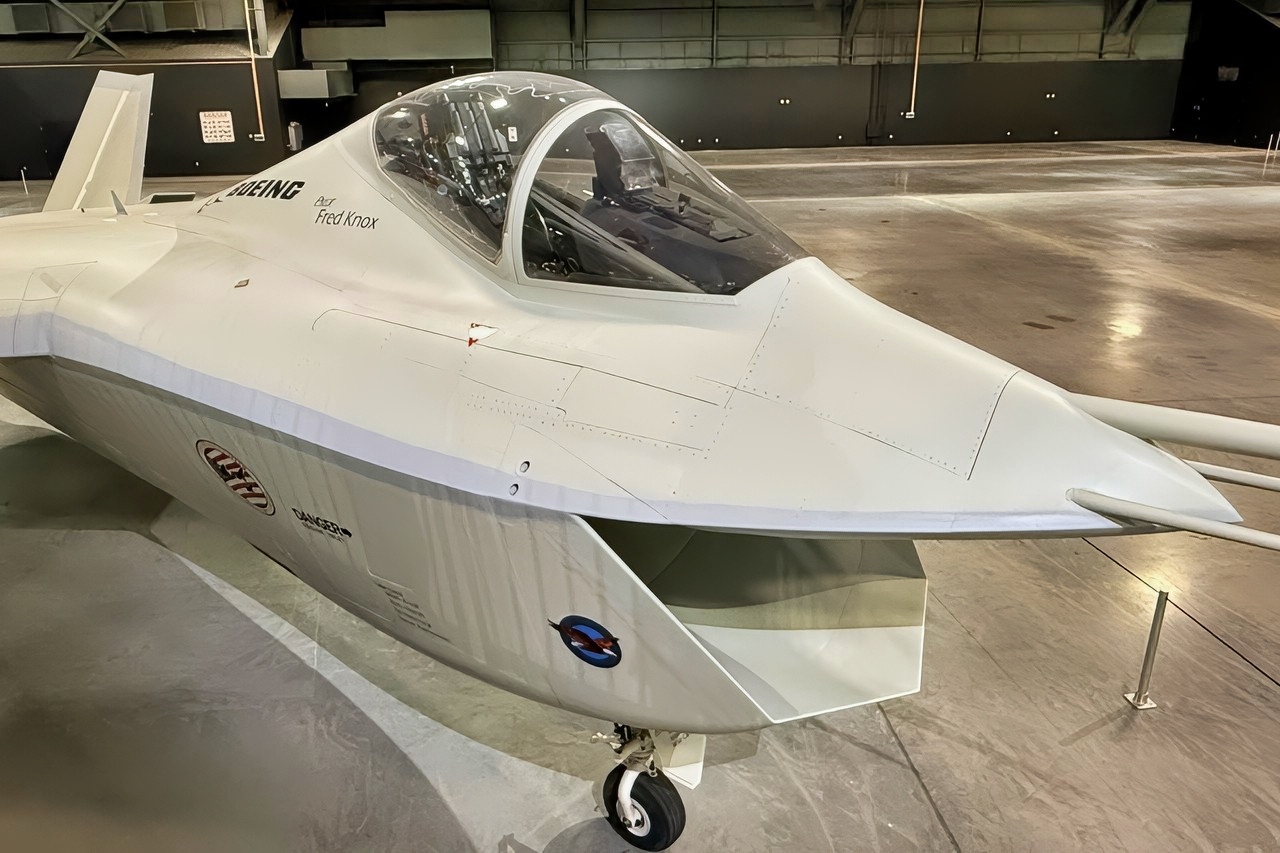Key Points and Summary – This analysis explores why Boeing’s X-32 lost the Joint Strike Fighter competition to the aircraft that became the F-35.
-While the X-32 was designed for manufacturing simplicity, its stealth capabilities were fatally compromised.
-Its large, chin-mounted air intake exposed the engine face to radar, and its direct-lift vertical takeoff system created a massive infrared signature.
-In contrast, Lockheed Martin’s X-35 was a superior stealth design, benefiting from their F-117 and F-22 experience.
-The X-32’s failure ultimately highlights that in modern fighter design, stealth cannot be compromised for cost-efficiency.
–National Security Journal spent several hours back in July 2025 at the U.S. Air Force Museum in Dayton, Ohio, with the Boeing X-32.
-All images and videos in this article are original and were created during Harry J. Kazianis’ visit, Editor-in-Chief of National Security Journal.
The Boeing X-32 Was Destined to Fail
The Boeing X-32 was an experimental tech demonstrator that competed against Lockheed Martin’s X-35 (which later became the F-35) in the Joint Strike Fighter Program.
The X-32 ultimately lost the program for a number of reasons, but one premier for its downfall was the compromises made to its stealth capabilities. Because of the aircrafts engine loadout, the X-32 reportedly had a bigger radar cross section than Lockheed’s X-35. While there were plans to fix that in the production F-32, the negative reputation the X-32 had built up had already cemented its fate.
The JSF Program: Boeing’s Contributions
The JSF program itself was born from the merger of two earlier initiatives: DARPA’s Common Affordable Lightweight Fighter (CALF) and the Joint Advanced Strike Technology (JAST) program.
These programs sought to develop a stealth-enabled aircraft that could replace aging platforms such as the F-16 Fighting Falcon, the F/A-18 Hornet, and the AV-8B Harrier II.
In 1996, Boeing and Lockheed Martin were awarded contracts to build concept demonstrator aircraft. These demonstrators were not full prototypes but were intended to showcase the feasibility of each company’s design philosophy and technological approach.
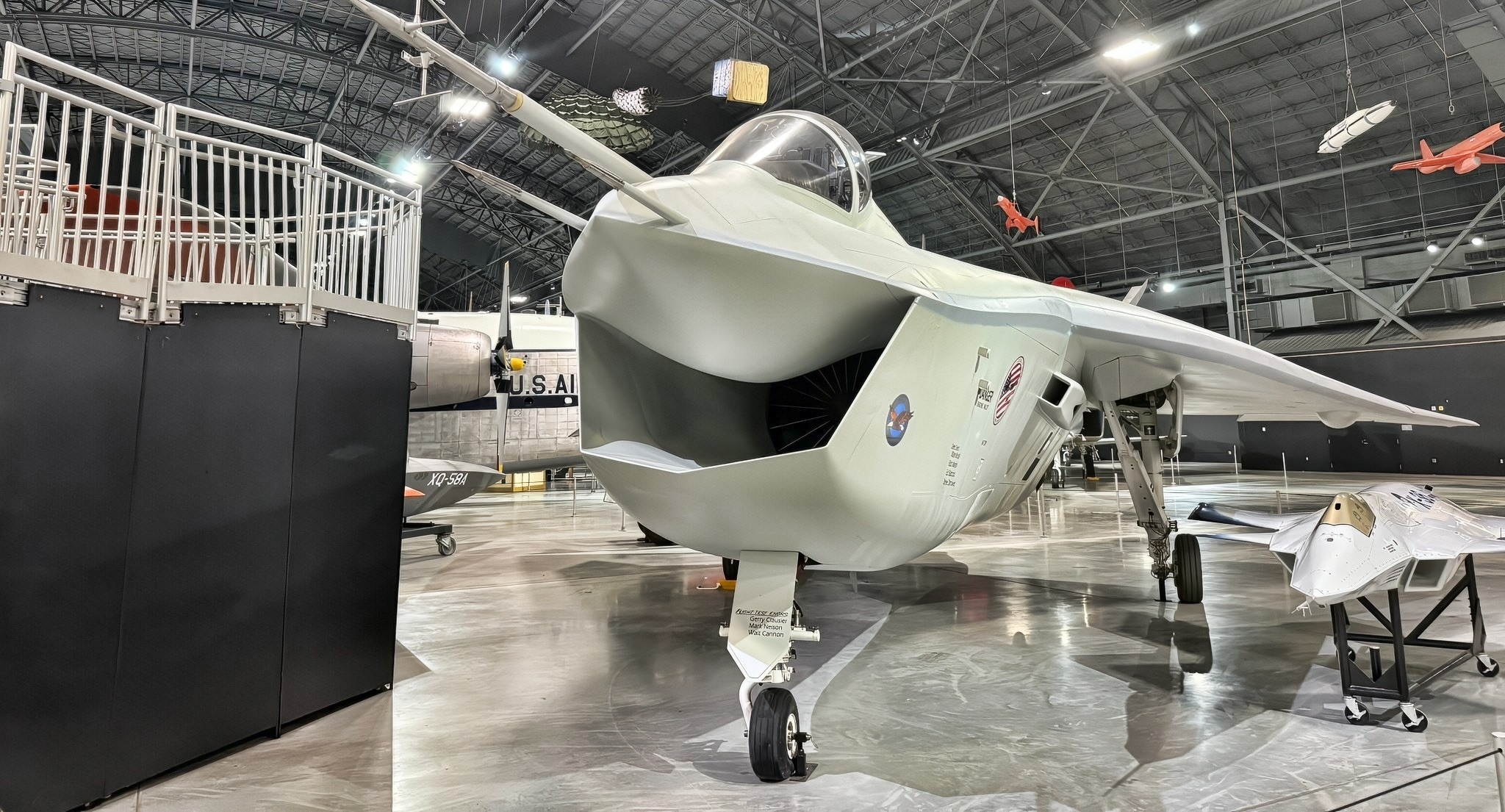
Boeing X-32 Bright Image. Credit: National Security Journal.
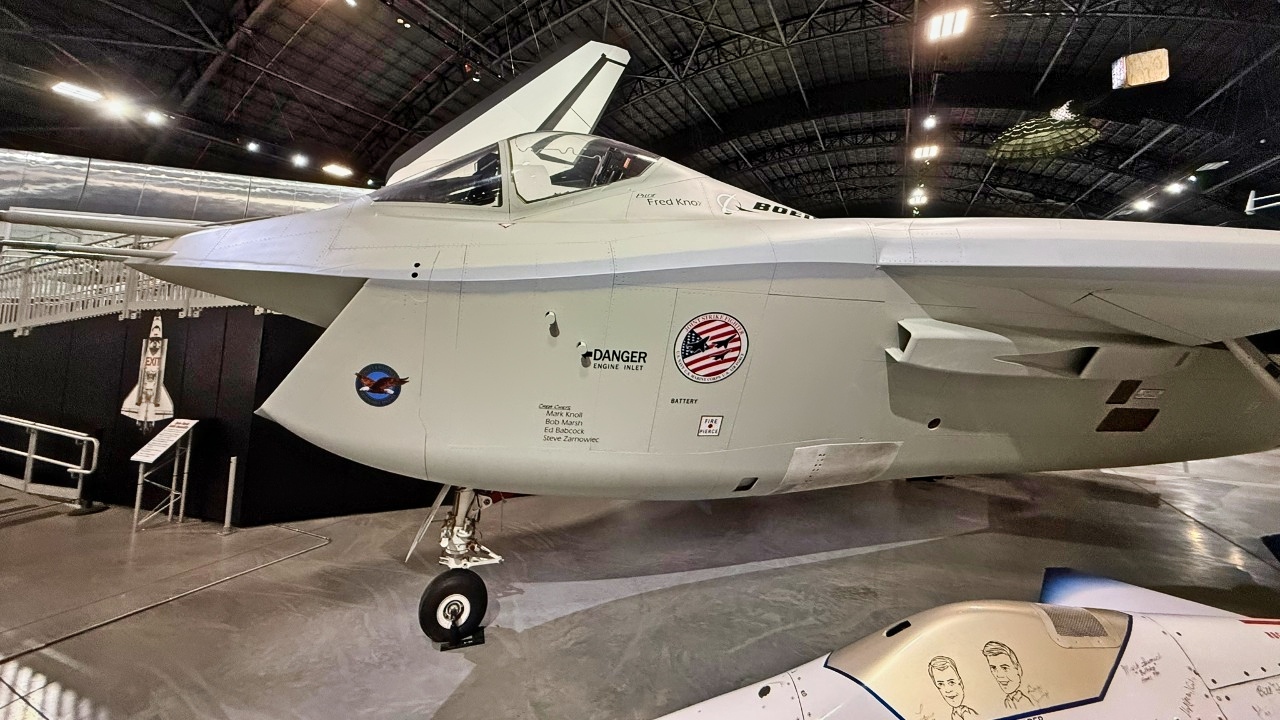
Boeing X-32 Fighter USAF Museum Dayton Ohio. Image Credit: National Security Journal.
Boeing’s X-32 was designed with cost-efficiency and manufacturing simplicity in mind. One of its most distinctive features was its large, one-piece carbon fiber composite delta wing. This wing design reduced production complexity and costs while allowing the aircraft to carry a substantial amount of internal fuel.
The wing had a 55-degree leading edge sweep and could hold up to 20,000 pounds of fuel, which was advantageous for range and endurance. However, while the X-32’s design was innovative from a manufacturing standpoint, it introduced several challenges in terms of stealth.
The X-32’s Stealth Characteristics
Stealth was a critical requirement for the JSF program, and Boeing’s design had notable limitations in this area. One of the most significant issues was the aircraft’s airframe shape and radar cross-section (RCS). The X-32 featured a large chin-mounted air intake, often referred to as the “alligator mouth,” which was necessary to support its direct-lift STOVL system. This intake design exposed the engine’s compressor blades to radar detection, a major vulnerability in stealth aircraft design.
While Boeing considered implementing variable baffles to block radar waves from reaching the engine face, these were not included in the demonstrator aircraft. As a result, the X-32 had a higher radar cross-section than its competitor, the X-35, which featured a more refined and stealth-optimized shape.
In addition to its shape, the X-32’s use of materials and surface treatments also affected its stealth performance. Although the aircraft incorporated advanced composite materials, its stealth coatings and radar-absorbing surface treatments were not as mature or effective as those used on the X-35.
Lockheed Martin had extensive experience with stealth aircraft, having developed the F-117 Nighthawk and the F-22 Raptor. This experience gave Lockheed a significant advantage in applying radar-absorbing materials and designing low-observable surfaces that minimized radar reflections.
Cursed by Design
Another factor that impacted the X-32’s stealth capabilities was its engine placement and infrared signature. The direct-lift system required the engine to be mounted close to the cockpit, with thrust vectoring nozzles positioned near the aircraft’s center of gravity. This configuration increased the aircraft’s infrared signature, especially during STOVL operations. In hover mode, hot exhaust gases were recirculated into the intake, reducing thrust and increasing heat emissions.
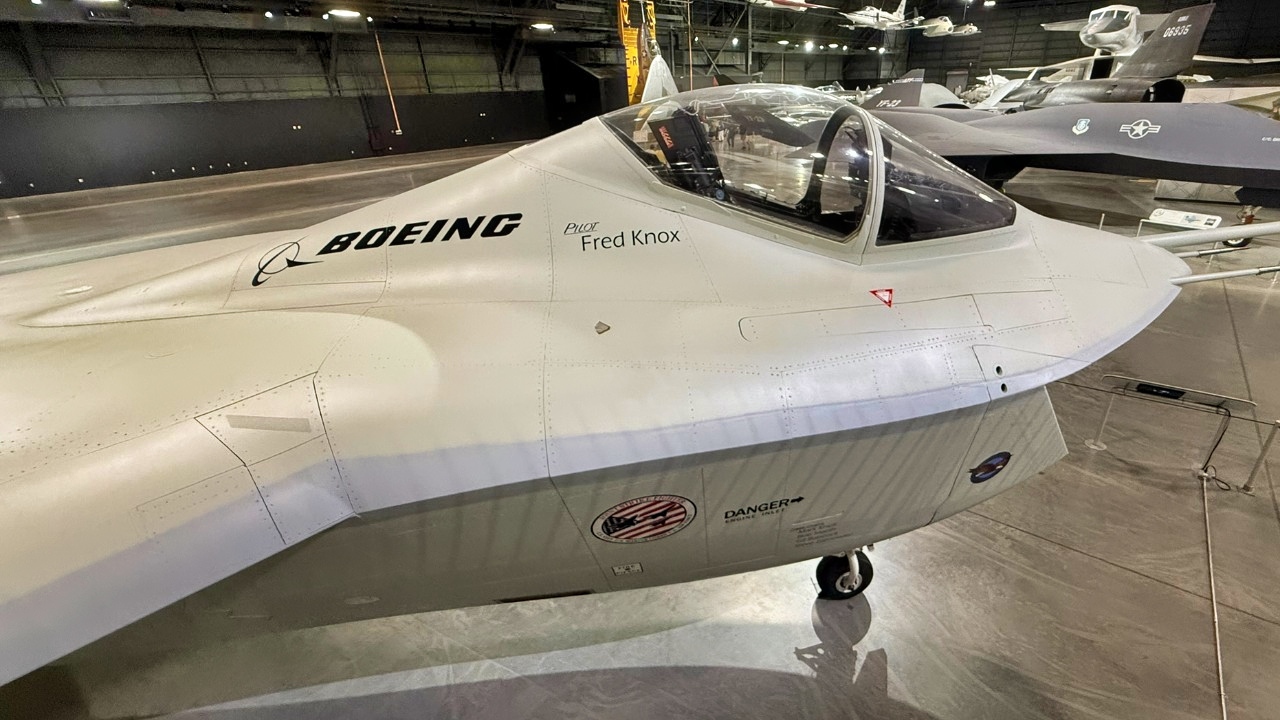
Boeing X-32 National Security Journal Photo.
This not only affected performance but also made the aircraft more detectable by infrared sensors. In contrast, the X-35 used a shaft-driven lift fan system, which redirected cool air from above the aircraft to below it. This approach significantly reduced the infrared signature and improved stealth performance.
During flight testing, the X-32 demonstrated its ability to perform conventional takeoff and landing, carrier approaches, and STOVL operations. However, it had to switch configurations to perform STOVL and supersonic flight separately, requiring physical modifications between tests.
This was a logistical and operational disadvantage compared to the X-35, which could transition between flight modes in real time without reconfiguration. Test pilots noted that the X-32 had excellent handling qualities, particularly during carrier landing simulations.
Commander Phillip “Rowdy” Yates, a Navy test pilot, praised the aircraft’s smooth and precise control responsiveness, comparing it favorably to the F/A-18. However, he also acknowledged that the STOVL performance was a weak point, particularly due to thrust limitations and overheating issues caused by the direct-lift system.
Why the X-32 Was Inferior to the X-35 or F-35
Beyond stealth, the X-35 offered several other advantages over the X-32. Its STOVL system was more efficient and reliable, its aerodynamic performance was superior, and its modular design was better suited to the diverse needs of the Air Force, Navy, and Marine Corps.
Importantly, Lockheed’s demonstrator closely resembled its proposed production model, while Boeing’s final design differed significantly from its demonstrator. This discrepancy raised concerns about Boeing’s ability to deliver on its promises and contributed to the decision to award the JSF contract to Lockheed Martin.
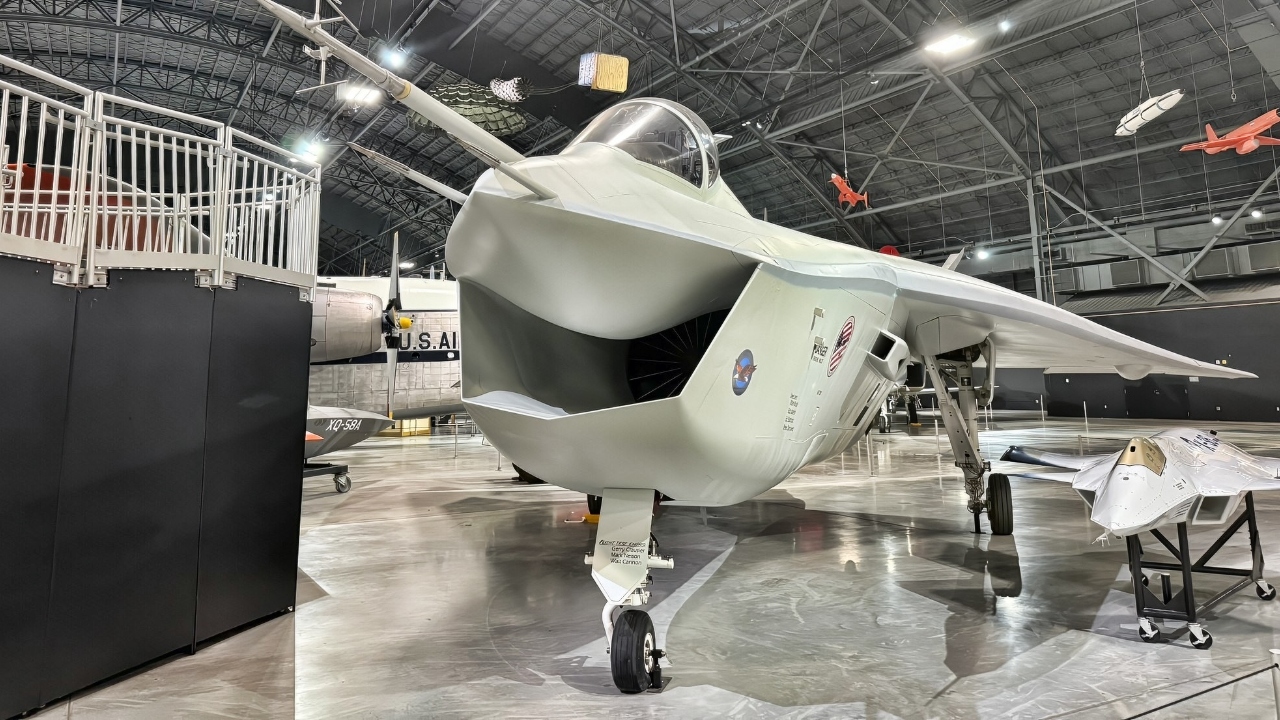
Boeing X-32 Bright Image 2025. Credit: National Security Journal.
Although the X-32 did not win the JSF competition, it provided valuable insights into aircraft design, digital manufacturing, and composite material use. Boeing applied lessons learned from the X-32 to other programs, including the F/A-18E/F Super Hornet.
The X-32’s failure highlights the importance of integrating stealth into every aspect of modern fighter design. While cost-efficiency and manufacturing simplicity are important, they cannot come at the expense of survivability and mission effectiveness in high-threat environments.
About the Author: Isaac Seitz
Isaac Seitz, a Defense Columnist, graduated from Patrick Henry College’s Strategic Intelligence and National Security program. He has also studied Russian at Middlebury Language Schools and has worked as an intelligence Analyst in the private sector.
More Military
China’s White Emperor NGAD 6th Generation Fighter Is Fake
The M10 Booker Light Tank Is Dead
SR-72 Darkstar Might Never Fly


